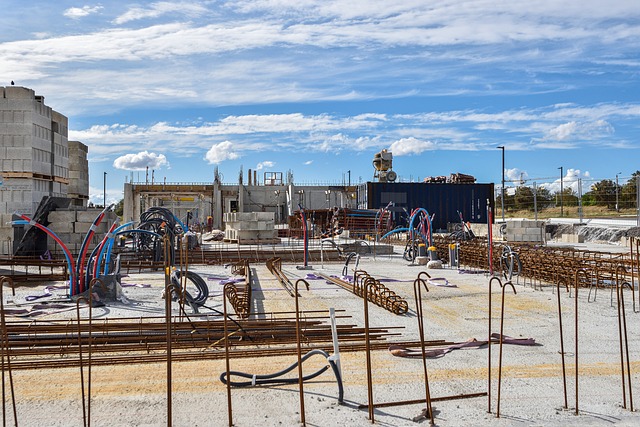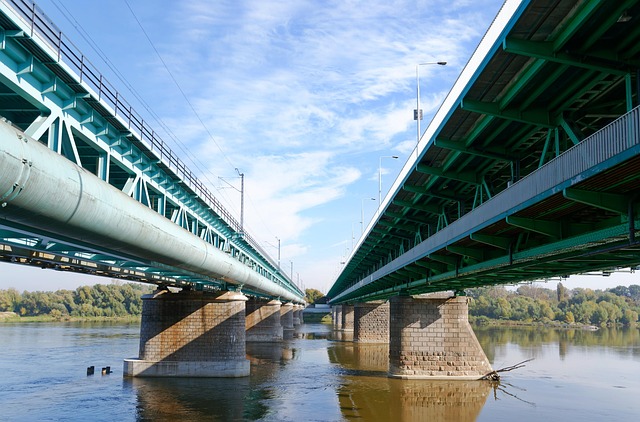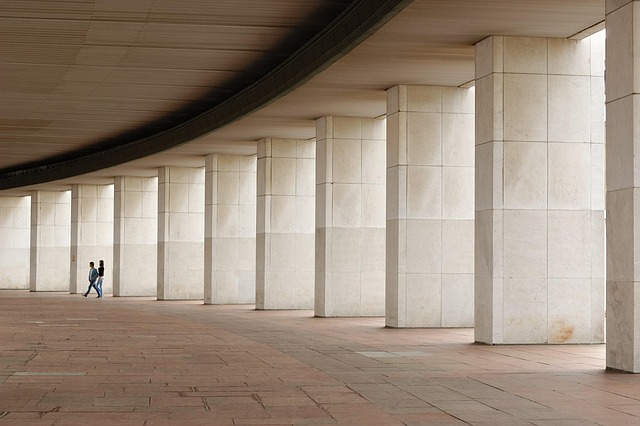Foundation issues like settlement, heave, and water table fluctuations can cause structural damage. Tailored Concrete Foundation Solutions include repairing/replacing sections, installing support beams, underpinning, or using techniques like steel reinforcement, pile foundation, underpinning, and slab jacking. Initial steps involve assessment and diagnosis using advanced methods to identify root causes, followed by non-invasive repair methods like chemical injections and epoxy injection. Modern technology has revolutionized foundation repair with precise, efficient techniques. Regular maintenance, including inspections, prompt damage addressing, and preventive measures, is crucial for long-term stability of Concrete Foundation Solutions.
Foundation repair is a critical aspect of maintaining any structure, ensuring stability and longevity. This comprehensive guide delves into the world of concrete foundation solutions, addressing common issues such as cracks, settlement, and shifting soils. We explore various repair techniques, from traditional methods to advanced technologies, offering non-invasive solutions for precise diagnosis and effective remedies. Discover expert strategies for maintenance and prevention, empowering you to safeguard your property’s foundation against future challenges.
Understanding Common Foundation Issues

Foundation issues can arise from various factors, and identifying the root cause is crucial for effective repair. One of the most common problems is settlement, often caused by poorly compacted soil, fluctuations in water tables, or changes in temperature. This can result in cracks, uneven floors, and doors that stick. Another prevalent issue is heave, which occurs when moisture expands and contracts in the soil, leading to dramatic vertical movements and potential structural damage.
Concrete foundation solutions are often required to address these problems. This may involve repairing or replacing sections of the foundation, installing support beams, or using underpinning techniques to stabilize the entire structure. Identifying the specific issue is key, as each problem requires tailored Concrete Foundation Solutions to ensure long-lasting repairs and prevent further damage.
Types of Concrete Foundation Solutions

Concrete Foundation Solutions come in various types, each designed to address specific structural issues and soil conditions. One popular method is steel reinforcement, where steel bars are embedded within the concrete to enhance its strength and durability, particularly effective against cracks caused by environmental factors like erosion and settlement. Another approach is the use of pile foundation, involving the installation of deep columns made from materials like concrete or steel to support the structure, ideal for areas with unstable soil or high water tables.
For homes with sagging or uneven floors, underpinning might be the solution. This involves adding new footings beneath the existing foundation to stabilize and level the structure. Additionally, there’s slab jacking, a process of lifting and repairing concrete slabs using hydraulic jacks, perfect for fixing settled or cracked basement floors. Each of these Concrete Foundation Solutions offers tailored repairs, ensuring structures remain robust and secure for years to come.
Assessment and Diagnosis Techniques

The first step in finding effective concrete foundation solutions is a thorough assessment and accurate diagnosis. Professionals employ advanced techniques to inspect the foundation, including visual examinations, where they carefully observe any cracks, unevenness, or signs of settlement. This initial evaluation helps identify potential issues such as heave, settle, or shift, which can be caused by various factors like soil conditions, water intrusion, or structural problems.
Diagnosis methods also include non-invasive technologies like ground radar and moisture meters to detect voids, moisture levels, and structural anomalies without disturbing the surface. These techniques provide valuable data, enabling experts to pinpoint problem areas and recommend appropriate concrete foundation solutions tailored to the specific needs of the structure.
Non-Invasive Repair Methods

Non-invasive repair methods are becoming increasingly popular for concrete foundation solutions, offering a less disruptive approach compared to traditional techniques. These modern solutions utilize advanced technologies and materials to stabilize and restore damaged foundations without extensive excavation or demolition. One such method involves the use of chemical injections to strengthen weak areas in the concrete, effectively filling cracks and preventing further damage. This process is fast, efficient, and requires minimal site preparation, making it an ideal choice for properties with limited access or where traditional methods would cause significant disturbance.
Another innovative technique leverages epoxy injection to create a durable, bondable surface for repairing structural defects. By injecting a mixture of epoxy resin and hardener into the affected areas, engineers can effectively fill gaps, reinforce existing concrete, and provide a strong foundation for additional construction or repair work. These non-invasive methods not only preserve the integrity of the existing structure but also offer long-lasting results, ensuring peace of mind for homeowners and property managers alike when it comes to their concrete foundation solutions.
Advanced Technology in Foundation Repair

The world of foundation repair has witnessed a significant transformation with the integration of advanced technology, offering more efficient and durable concrete foundation solutions. Traditional methods often involved time-consuming manual labor and imprecise techniques, but modern innovations have revolutionized this process. One such breakthrough is the use of sophisticated sensors and monitoring systems that detect even the slightest movements or cracks in foundations, allowing for prompt action to prevent further damage.
These technological advancements enable professionals to employ precise repair techniques tailored to specific issues. For instance, laser technology can measure and mark reference points accurately, ensuring structural integrity during repairs. Additionally, robotic equipment and drones are being utilized for intricate tasks like inspection, especially in hard-to-reach areas, providing a detailed view of the foundation’s condition. Such innovations not only expedite the repair process but also enhance long-term stability and the overall durability of concrete foundations.
Maintenance and Long-Term Prevention Strategies

Regular maintenance is key to ensuring long-term stability for any concrete foundation solutions. This includes periodic visual inspections to identify any signs of damage, cracks, or water intrusion. Addressing these issues promptly can prevent further deterioration and costly repairs. Implementing preventive measures such as proper drainage around the structure and applying waterproof membranes can also significantly reduce the risk of foundation problems.
To maintain optimal conditions, it’s essential to keep the surrounding area clear of debris and ensure that downspouts and gutters are functioning correctly to divert water away from the foundation. Additionally, controlling moisture levels within the crawl space or basement can mitigate issues like settlement and heave, which are common causes of foundation damage. Regular maintenance and these proactive strategies will contribute to the longevity and stability of your concrete foundation.
